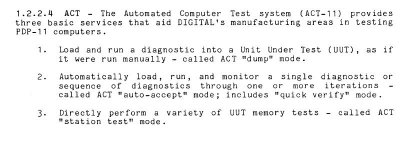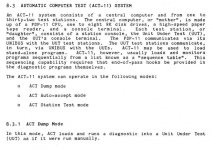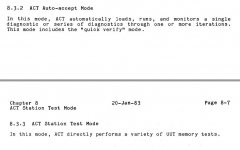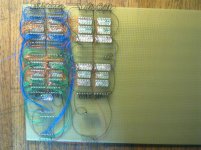Marty
Veteran Member
Hi All;
Dave, Thanks for the Information and Links for Unix 6..
On a side Note I have copied Unix 1 thru Unix 4 and have to do Unix 5 thru Unix 7..
If nothing else, I can see the Evolution of the Unix and "C" toward what is more like what we have now..
I know I will be needing this Information, if I am ever going to get it Running under either SIMH or my Real Machine..
I think, my main fear is getting SIMH going and Running, since I use it very Little and so I am Afraid to go and use it..
I know that this Sounds incredibility ridiculous..
But, that is the main Reason I have stayed with trying to do it on my Real Machine first and then after some trouble or problem will I either ask people or try it on SIMH..
I have written down How to do things with SIMH somewhere, but, I always loose the notes, by the next time I need them..
"" I managed to pick up some mains cable today of the correct type (hooray)... ""
IS this the Cables that You have had made or is this some other Cables that You found or otherwise acquired ??
I have also wired up 1/ 12th of the new revised MACT unit for testing the various boards..
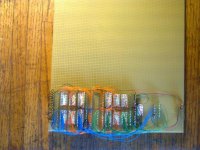
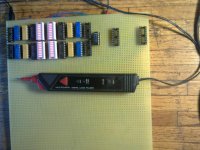
Now it's 1 / 6th of the way there..
THANK YOU Marty
Dave, Thanks for the Information and Links for Unix 6..
On a side Note I have copied Unix 1 thru Unix 4 and have to do Unix 5 thru Unix 7..
If nothing else, I can see the Evolution of the Unix and "C" toward what is more like what we have now..
I know I will be needing this Information, if I am ever going to get it Running under either SIMH or my Real Machine..
I think, my main fear is getting SIMH going and Running, since I use it very Little and so I am Afraid to go and use it..
I know that this Sounds incredibility ridiculous..
But, that is the main Reason I have stayed with trying to do it on my Real Machine first and then after some trouble or problem will I either ask people or try it on SIMH..
I have written down How to do things with SIMH somewhere, but, I always loose the notes, by the next time I need them..
"" I managed to pick up some mains cable today of the correct type (hooray)... ""
IS this the Cables that You have had made or is this some other Cables that You found or otherwise acquired ??
I have also wired up 1/ 12th of the new revised MACT unit for testing the various boards..


Now it's 1 / 6th of the way there..
THANK YOU Marty
Last edited:

